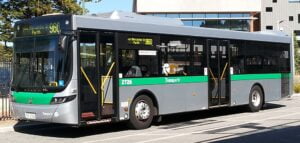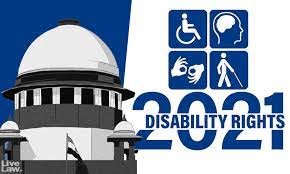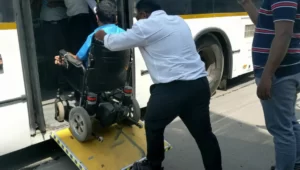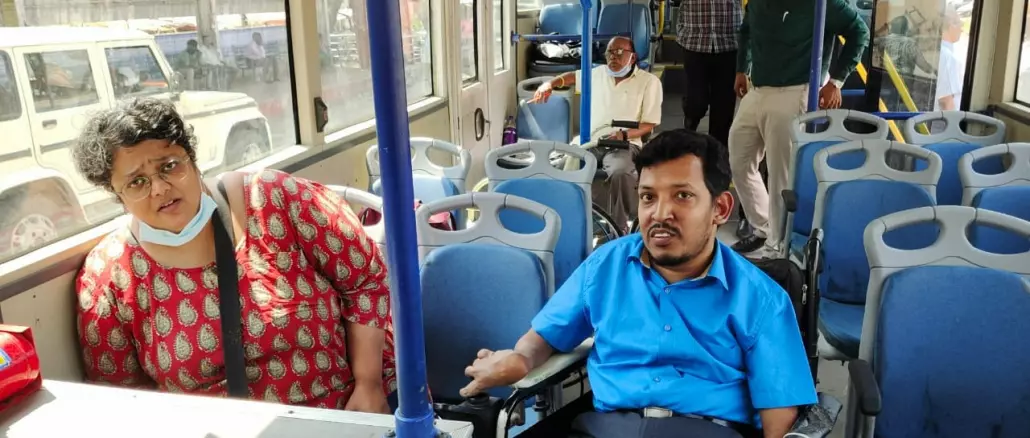Low-floor, accessible buses were tested along several routes in Chennai in accordance with a Madras High Court directive.
Currently, there is no accessibility for people with disabilities on the buses that run on the streets of Chennai. Almost the majority of the buses have a four-step approach and are three feet tall. This meant no one needing a wheelchair could use the city’s well-known public transportation system.

Image for representation.
Image Source: Wikipedia
It required a judicial challenge and an order from the Madras High Court for the trial of accessible buses to proceed despite several requests from PWDs and campaigners. There is optimism that hundreds of low-floor buses will soon travel around Chennai following the trial run. Accessible buses will help not only people with impairments but also elderly citizens, pregnant women, and other people.
The Need For Accessible Buses In Chennai
People with disabilities (PWD) have had to shoulder significant financial burdens without accessible public transport to travel the city comfortably. The PWD’s only options are to stay home or pay for expensive private transportation.
PWDs use autos or cabs since there is no accessible transportation. They can typically spend between Rs. 10,000 and Rs. 12,000 monthly on only transportation. When public transport is more accessible, their monthly travel costs will not exceed Rs. 3,000. It will be less expensive if travel concessions are offered.

Image Source: Hindustan Times
They always need assistance getting in and out of the cab or car despite paying more. PWDs need support to sit in the cab or auto, fold the wheelchair and store it inside.
Chennai’s Fight For Low-Floor Buses
Getting low-floor buses to Chennai has been a complex and protracted process. In 2005, a few DRA (Disability Rights Alliance) members filed a lawsuit requesting low-floor buses. After that, they continued in 2009 and 2010. Ten buses with elevators were added along a few routes after these improvements.
Some people with disabilities tested a bus with a lift. However, it was not completely accessible and had operational issues for the passengers, such as a safety issue with the lift operator’s height.

Image Source: @DisabilityIndia Twitter
The Disability Act of 2016 required that all public transport be accessible. Additionally, low-floor buses must be provided per the Union Government’s urban bus specifications to improve public transportation for all groups of people, including senior citizens, pregnant women, and people with disabilities. The state government, however, still needs to comply with these regulations.
2018 saw the resumption of the battle for accessible buses, which resulted in a good ruling from the High Court. Following the trial, 499 low-floor buses will operate in Chennai and 200 in Madurai and Coimbatore out of the 2,213 buses that must be purchased.
An Experience:
On the second day of the trial, PWD Activist Sathish Kumar took a low-floor bus. The bus travelled to Medavakkam from Anna Salai through the OMR and Shollinganallur. The bus dropped me off at Medavakkam.
The low-floor buses are barely 400 mm tall. When the bus tilts, another 50 mm will be lost during the stop. A manual foldable ramp is opened once the bus stops to make it simple for a wheelchair to enter. The ramp is then folded once more.

Chennai Ramp Of Low Floor Bus
Image Source: Sathish Kumar
Low-floor buses just have one step, unlike the buses we see on the highways nowadays. One bus area has a low floor, and the remaining includes passenger seats. Within a minute, he could board the bus after someone unlocked the ramp. The low-floor buses have finished their trial run, and the tendering process will soon begin.



















































































